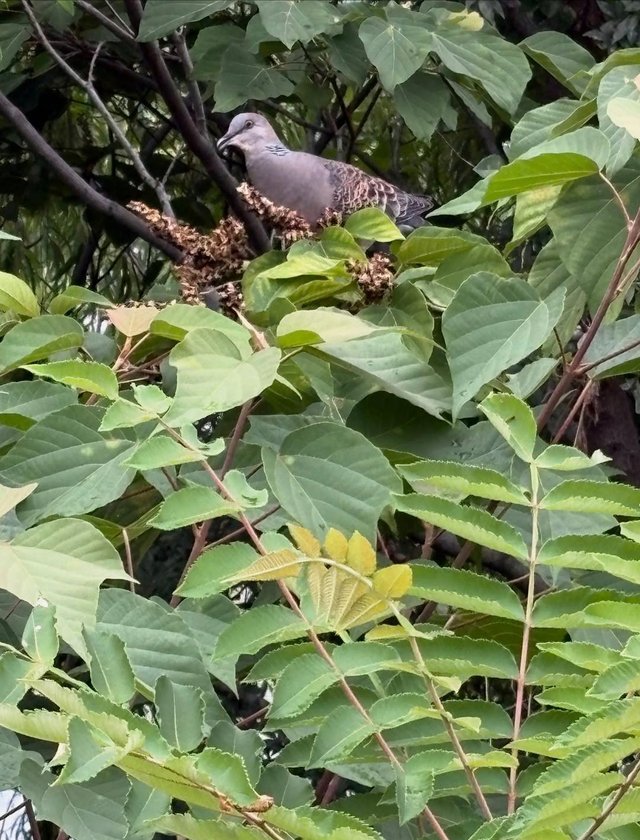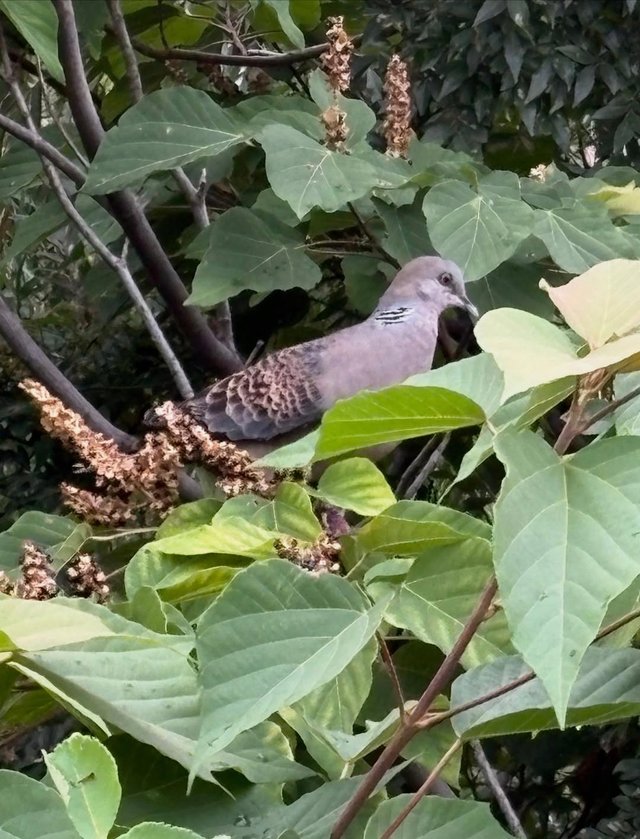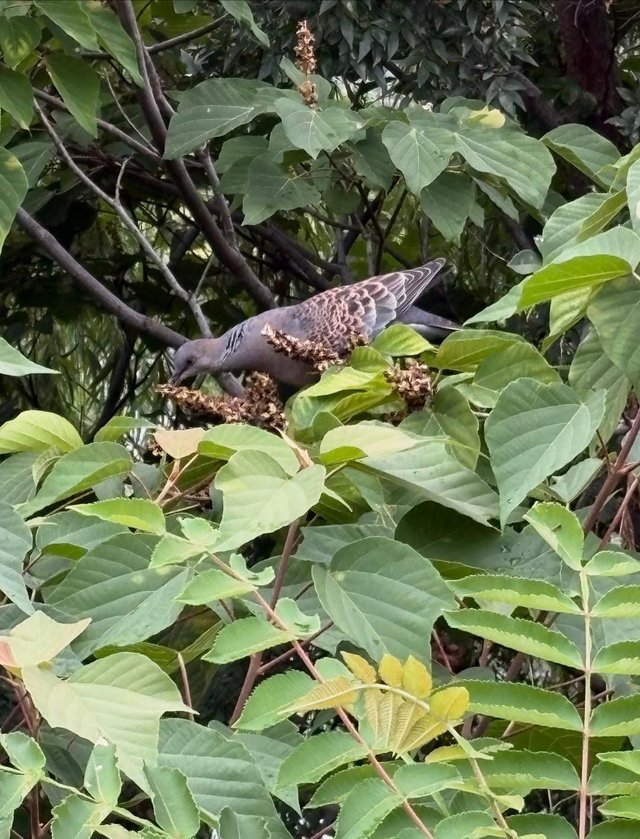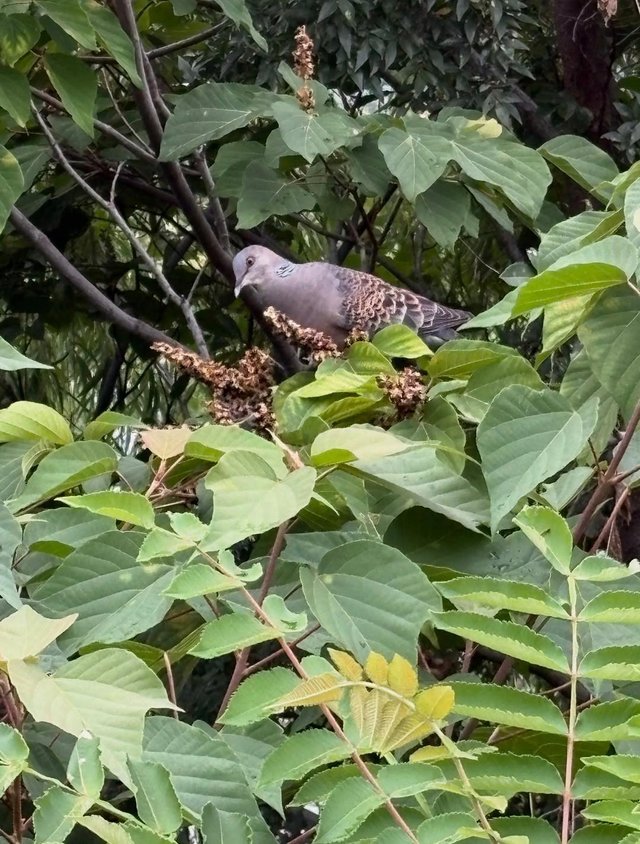Spotted dove Bird
Spotted dove it is native to Asia particularly found in countries like India China Sri Lanka Myanmar and extending to Southeast Asia but over time it has also been introduced to many other regions including Australia New Zealand and some Pacific islands where it has established stable populations the spotted dove is easily recognized by the distinctive black collar on the back and sides of its neck which is finely spotted with white giving the species its common name it has a generally slender body with a long rounded tail soft grayish-brown plumage on the upper parts and a pinkish-buff hue on the underparts the wings are mottled with darker markings while.
The head is slightly bluish-gray and the eyes are dark surrounded by a narrow ring of bare skin the bird typically measures around 30 to 32 centimeters in length and weighs between 150 to 200 grams the spotted dove is highly adaptable and is often seen in both urban and rural habitats including gardens parks farmland forest edges and open scrublands it feeds mainly on seeds grains and small plants but may also consume insects on occasion they forage mostly on the ground walking with a graceful gait and picking up food items with their slender beak these doves are known for their soft cooing calls which are repeated in a rhythmic manner and often heard in the early morning or late afternoon.
The call is one of their most distinctive features and is used for communication between pairs and to establish territory spotted doves are monogamous forming long-term pair bonds and both parents participate in raising their young the nest is usually a flimsy platform of twigs built in trees shrubs or even on building ledges the female typically lays two white eggs which are incubated by both parents for about two weeks after hatching the chicks are fed with crop milk produced by both parents and fledge in about two to three weeks the species is non-migratory but may move locally in search of food or better breeding conditions spotted doves are highly resilient and thrive in human-dominated landscapes making them one of the most commonly seen birds in many parts of Asia in cultural symbolism they are often associated with peace fidelity.




